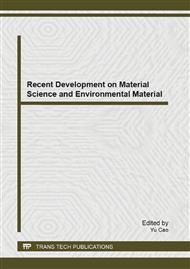p.308
p.312
p.317
p.321
p.325
p.330
p.336
p.341
p.345
Analysis on the Contact Mechanics between Tip and Sample in Atomic Force Acoustic Microscope Method
Abstract:
Atomic force acoustic microscopy (AFAM) is a technique combining the atomic force microscope (AFM) and ultrasonic technique, where the cantilever or the sample surface is vibrated at ultrasonic frequencies while a sample surface is scanned with the sensor tip contacting the sample. At a consequence, the amplitude of the cantilever vibration as well as the shift of the cantilever resonance frequencies contain information about local tip-sample contact stiffness and can be used as imaging quantities. It has been demonstrated to be a powerful tool for the investigation of the local elastic prosperities of sample surface. The sample is tested in the contact mode, the resonant frequency of the cantilever is measured, by which the contact stiffness is calculated based on the model of vibration of the cantilever, and then the elastic property of sample is evaluated according to the contact theory. Therefore, the contact model has an important impact on the calculation of elastic modulus. This paper analyzes the contact model between the AFM probe and the sample, and it is investigated based on finite element method (FEM) that the results of the test are affected by parameters.
Info:
Periodical:
Pages:
325-329
Citation:
Online since:
September 2013
Authors:
Price:
Сopyright:
© 2013 Trans Tech Publications Ltd. All Rights Reserved
Share:
Citation:


